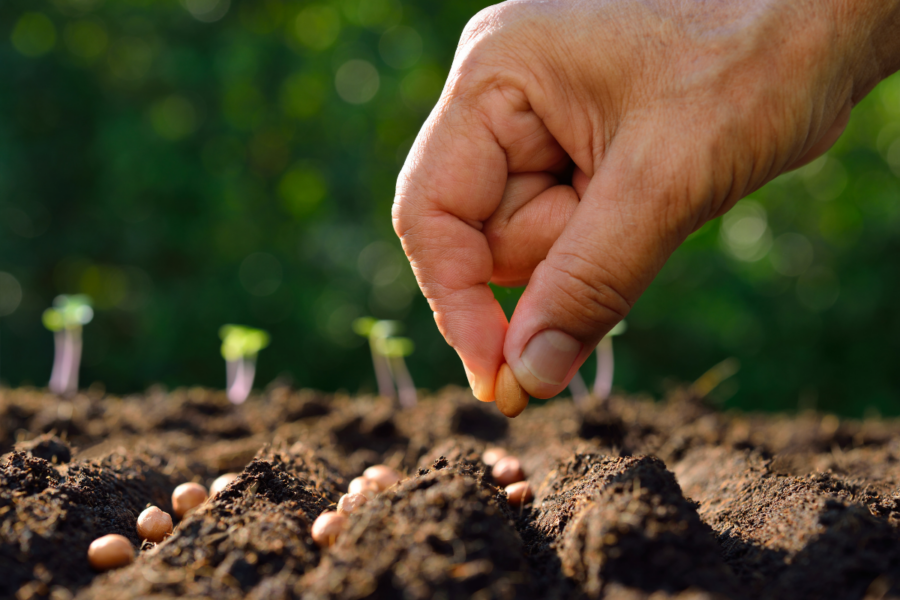Bob explains how to know when the time is nigh
This month our soil begins to warm and we can start sowing hardy plants in the ground. This can give us the very finest specimens as they grow without check from potting and planting out. Indeed some crops and many flowering annuals cannot sensibly be sown elsewhere and transplanted so must be sown in situ anyway.
On the other hand, where possible, sowing under cover in cells or pots and planting out has huge advantages. We can start earlier, it’s more certain, and there’s less risk from weather, birds and so on. As with much of gardening it’s swings and roundabouts, ideally we do both whenever possible, and in several batches.
Generally the first sowings outdoors are peas, broad beans and roots, maybe the cabbages in a seedbed. All of which need their soil warm enough or they’ll likely never appear.
How do we know our soil is warm enough?
I’m sure you’ve heard tales of farmers sitting bare behind on the soil to determine the readiness, I seriously doubt that’s anything other than rustic jokery.
It’s observation, you have a piece of bare soil, raked, empty, looks same every day till suddenly there’s a fine green haze appeared as myriad weed seedlings emerge. NOW it’s ready. As soon as weeds tell it’s warm enough for them, then it’s nearly warm enough for our seeds, few of which can germinate in colder soil than weeds.

You can of course help your soil warm sooner
Drawing soil up into mounds or ridges exposes one side to more sun. Actually whole beds have been built on a slope towards the sun just for the extra warmth. (I know, I’ve done this, it works but it’s an immense amount of soil to move and efforts in the process.) Also this doesn’t work if you practice no-dig. It’s all food for thought anyway.
Darker soil warms quicker, so the more muck, leaf-mould and compost you’ve added the better -as long as it was finely divided not lumpy! You can make a difference by dusting soot from a wood burner or better, powdered BBQ charcoal, on the surface- something well worth doing next month over sweetcorn and French bean seeds. Indeed it’s worth dusting powdered charcoal over any just sown seed, as it warms and also usefully marks the site.
Weed protection and warming ideas
To warm, and prevent competition early on you can seriously reduce the number of weeds appearing right next to your seedlings by covering your seed drill (the continuous shallow groove you sow in) with moist dark sowing / spent potting compost instead of more soil.
Another old trick is when watering before sowing (it’s much better than trying to water effectively afterwards) is to use warm water down the drill. This leaves the soil welcomingly warm to sow into, then immediately covering and firming down keeps your seeds snuggly warm and moist. Most effective of all however is to put over some cloches or clear plastic sheet supported on sticks or whatever, and handily that will keep those cats and birds off too.
Find more tips, advice and articles like this at the Amateur Gardening website. Subscribe to Amateur Gardening magazine now.





